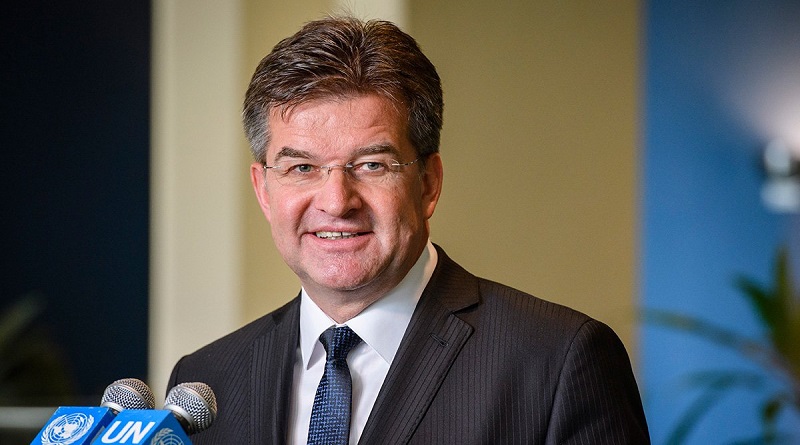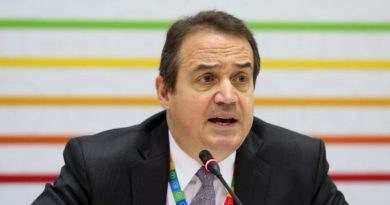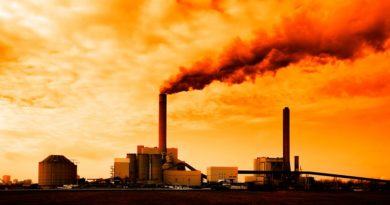Why sustainable energy is critical for Paris goals, SDGs- UNGA President
President of the 72nd United Nations General Assembly, Miroslav Lajčák, has said that time is running out to stave off the worst impacts of climate change, and scaling up the deployment of renewable energy is crucial to achieve the goals of the Paris Climate Change Agreement and the Sustainable Development Goals. Lajčák told delegates at the Abu Dhabi Sustainability Week.
“The size and extent of the climate change threat is new. It is arguably the biggest challenge humanity faces today. This means that we must act urgently and seize opportunities quickly. One such opportunity is renewable energy,” he said.
Miroslav Lajčák also highlighted the role of the UN’s Sustainable Development Goals in the implementation of the national climate action plans (“Nationally Determined Contributions”, or “NDCs”), which detail what each country will contribute to the global response to climate change, in line with their national circumstances.
“To make this transition to sustainable energy, many countries need support – such as capacity building and transfer of technology. Inclusion of renewable energy plans in nationally determined contributions can help attract the financing needed to implement them”, he said.
Mr. Adnan Amin, Director General of IRENA, Excellencies, Honourable Ministers, ladies and gentlemen
The Paris Agreement ushered in a new global approach to climate change. At the core of this agreement are the Nationally Determined Contributions. We are now implementing these pledges.
Over the last few days we have heard much about challenges and opportunities. Challenges are nothing new. It is how we respond that determines our fate.
That being said, the size and extent of the climate change threat is new. It is arguably the biggest challenge humanity faces today. This means that we must act urgently and seize opportunities quickly. One such opportunity is renewable energy.
We are now implementing the pledges. And we are more than halfway to the 2020 finish line. There will be checkpoints along the way. Later this year, there will be the 2018 facilitative dialogue. This is a much-needed chance to assess how far we have come and how much further we have to go.
We already know that the current pledges are not enough to keep warming below 2 degrees Celsius. We have the tools, the plan and will submit new and more ambitious pledges in 2020. But we need urgent action now.
So where do we stand today?
First, access to energy remains a major development concern. The importance of access to modern and affordable energy lies in the impact it has on people’s lives.
Billions of people around the world still lack access to affordable and modern energy. For example, in Africa just under 50% of the population had access to electricity.
The energy challenge is many-sided. But with the right energy policies we can provide energy to everyone without creating additional burden on our planet. Many developing countries are investing in low-carbon energy sources and energy efficiency measures. This can ensure that economic growth is not coupled with pressure on the environment. Likewise, the share of renewable energy in the mix is growing steadily.
To make this transition to sustainable energy, many countries need support –such as capacity building and transfer of technology. Inclusion of renewable energy plans in nationally determined contributions can help attract the financing needed to implement them. Which brings me to my next point:
Nationally determined contributions are critical tools for saving our planet.
As we are all aware, the current pledges will carry us over the 2 degree Celsius precipice, and far beyond, our 1.5 degree aspiration. On one hand, we must commend the 165 countries that made pledges. These pledges form a good basis for action. But at the same time, we cannot afford to ignore the reality that they are far from enough. We should consider the pledges as a floor rather than as a ceiling.
We need urgent and far-reaching pre-2020 action. Time is running out for the woman losing her livelihood to climate-induced desertification. For the child who will have to abandon her home to a rapidly-rising sea level. And for the communities that will have to build back only to be washed away again. Time is already up for many lives lost in heatwaves, droughts, extreme weather events and public health crises – all due to climate change.
Simply put: We must do what we have pledged to do. We must pledge to do more. And we must take urgent action to fulfil these promises. This is our joint and individual responsibility to our people and our planet.
My third point is that SDG 7 is pivotal for the achievement of Agenda 2030. It calls on us to provide energy for all by 2030, and to do so sustainably. This means increasing access, efficiency, renewables and the means with which to do it. Sustainable energy is also critical for achieving the overall goal of the Paris Agreement – to keep the temperature rise below 2 degrees Celsius.
Development does not necessarily equal more carbon emissions. In fact, sustainable development, creating a decent life for all on a sustainable planet, involves less carbon emissions. Instead of a vicious cycle involving development for some and increased carbon emissions, we have the chance to create a “virtuous circle” of raising ambition, development and renewable energy deployment.
In conclusion, we live in a time of challenges, opportunities and high stakes. Our failure to act decisively and unequivocally at this critical moment in history will determine our future.
The Paris Agreement and Sustainable Development Goals are our plans. The climate pledges manifest our collective promise to the people of this world, and it is the lives of these people that should spur us into action.




